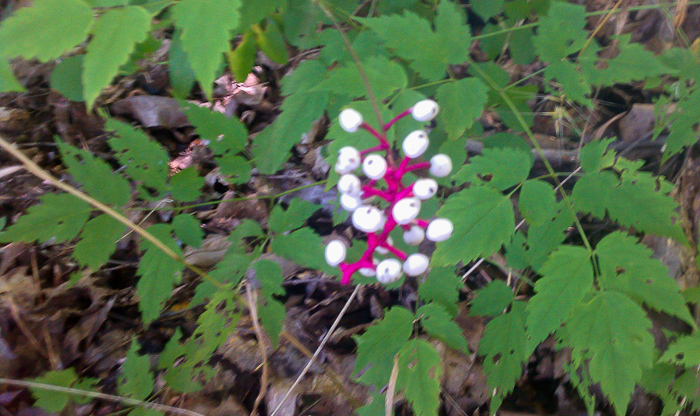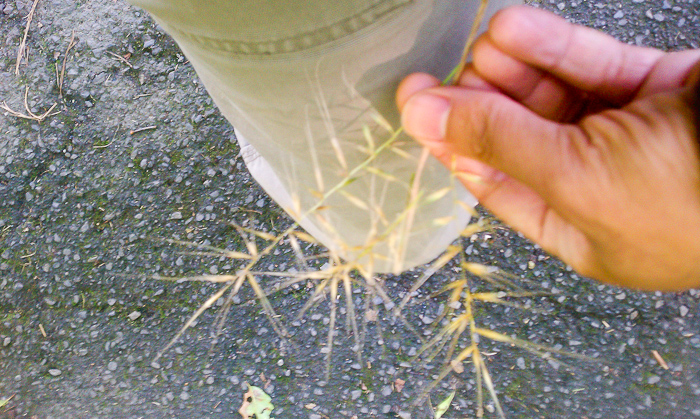Doll’s Eye and Bottlebrush
Just awhile back we drove to Schwenksville, Pennsylvania to pick up my son from sleep-away camp.†† North Eastern Pennsylvania is this unique mix of wilderness/farmland†† thrown together with ethnic /suburban. The rolling hills of the blue ridge mountains and Delaware Water Gap vibe give the area a definitive country vibe and yet the ethnic mix of dutch, German, African-American and even Middle Eastern give this area† a very unique flair. Its also a prime area to see a lot of the native plants that supposedly grow in the New Jersey area.
Many a native plant knucklehead has been discouraged by what we actually find in our local environment versus what is supposed to be there. Native Plant books offer trophy shots of rare gems like trilliums, and Indian Pipe (Monotropa uniflora). In reality many of us are lucky if we come across some false sunflower or purple coneflower. And usually jammed up against somebody’s mailbox at that.† But on this trip to PA I saw thick stands of Joe Pye†Weed (eupatorium purpureum) growing on the side of the road. There were radiant patches of staghorn sumac gone russet in late August.† -a bittersweet foreshadowing that the warm days are coming to an end. There were strands of† milkweed everywhere you looked. No extra-terrestrial seed pods yet but still otherworldly with their unsubtle leaf pattern.†
To counter this there were also vigorous groves of Ailanthus trees all along US Route 80 and Route 78.† The camp itself was in many areas completely carpeted with stiltgrass (Microstegium vimineum).† Where my son’s cabin was a grove of Japanese maples were cozily naturalizing.† And its funny to think what some people will pay for those trees at the garden store.† Then again its also funny to think about the premiums some places charge us to buy plants that are supposed to be native to our area.†
While my wife attended our son in the closing ceremonies† I took the opportunity to sneak around the campgrounds to check out the local flora.
On a trail toward a small lake/pond I spied this doll’s eye plant (Actaea pachypoda).† It was a wooded path, well shaded and the slope was covered with ferns and oxe eye daisies but you could not miss those distinctive spooky looking berries and hot magenta stems.
I took two berries without hesitation.† My inner native plant nerd was doing cartwheels. As an afterthought I grabbed a third berry and several seed heads of bottlebrush grass (Elymus hystrix). The bottlebrush grass was yellow and ready for harvesting. At the time I wasn’t sure about the dolls eye berries.†Had I picked them too early?† This got me thinking† about the ethics of picking wild native plants to use domestically.† In regard to me scoring those berries and seed heads, I know that† some of you are seeing daggers and screaming bloody murder like I pulled fresh Indigo bunting eggs out of a nest and ate them like so many M&M’s in a movie theater.

In my defense:
- My son’s camp was NOT on a nature preserve or protected lands. I paid for my son to use those facilities and I was there to pick him up. In no way was I trespassing.
- I didn’t take a whole plant. I took berries and seed heads which are BY DESIGN meant to be taken from the plant.† (Striking white berries, bright magenta stems, Hello!?)
- I didn’t take all of the berries. Of the nineteen available, I took three.
- The bottle brush grass was all over the place and 3-4 seed heads I scored don’t begin to dent the amount that were available on that path alone.
“Yeah, Whatever you need to do to help yourself sleep at night.” I can hear you, my own conscious and that crazy old man with the shopping cart from The Talisman ranting at me: Fusshhingfeef! Fusshhing FEEEFF!!
I guess technically I should have asked the owner of the camp if I could score some of his precious native plant seeds.† I figured the $365 we paid for the week covered me. —Crimony! Call the cops!Seriously though, what is a good rule of thumb on obtaining wild specimens of native plants?
And by the way, you†should†get local wild specimens if you can. Here’s why:
1. People taking fruits and seeds is completely natural, within reason. We all agree that plants have evolved ways to get, wind, water, and animals to disperse their seeds. We humans are actually included in the animals that many plants are counting on. We can’t say out of one side of our face, "Get in tune with nature!" and then out of the other side… "Deny your†natural†instinct!"
2. That’s half of how we got into this mess with the invasive plants. Many of the pest species here were brought over as ornamental plants. †Its amazing to me that we know exactly how invasive plants get established and yet all of us native plant nerds are scratching our heads in our tidy little monthly meetings and also extorting each other at folksy native plant sales… instead of reestablishing native plants in the same way we established the stuff we don’t want. †If we are lucky, †maybe some of these rare native plants will re-escape and displace some of the immigrant plants in the same fashion.
3. Doesn’t matter if we tell people not to pick wild native plants, they’re going to do it anyway. Don’t believe me? Even with all the articles, trend status and native plant crybabies (myself included) the garden stores are still just rife with import plants —several of them bona fide pests. So why waste time telling people to not pick wild natives? Saying, "No!" will only reinforce the desire to disobey.†
So coming back around, my dolls eye seeds are safely planted †in the shaded thicket just behind my stolen garden. I haven’t found a spot for the bottlebrush grass yet, but I will. —some place nice, some place where it will spread and flourish. I’ll keep you posted.
September 12, 2013Posted in IDEAS, OUTSIDETags: bottlebrush, doll's eyes, native plant seeds, seeds Leave a comment
